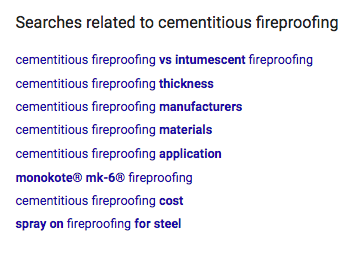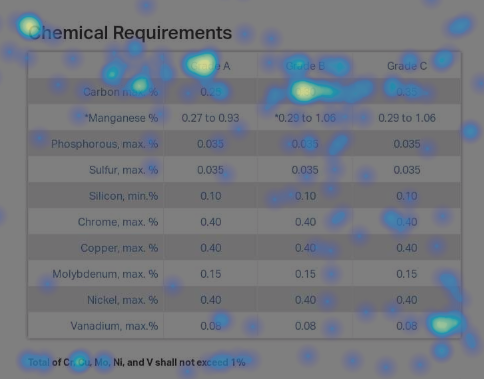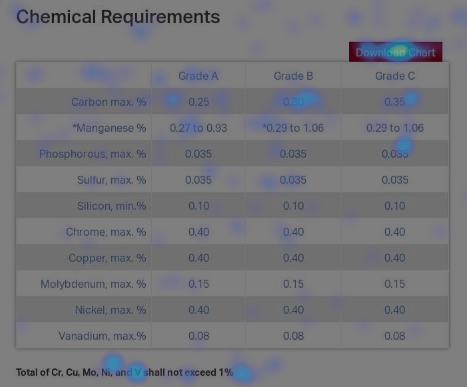If you’ve read other articles on industrial strategy on this blog before or you’re the marketing pro in your organization, you’re likely familiar with the basics of SEO, content strategy and digital marketing tactics as a whole. When you reach this point, you’ve likely been tinkering with your company’s online strategy, learning how engineers engage with your content and even driving some year-over-year growth for traffic or leads that’s caught your President’s attention.
Now you have something to prove and are looking for some homerun strategies to implement and keep the marketing pipeline growing for your sales team. Look no further, here are some of my favorite strategies to employ in a rounded-out industrial marketing plan.
#1: Keyword research with related searches for smart SEO and lean content
We’ve spoken often about the complexities of SEO, but what makes it such an intricate challenge? Since Google has held their poker hand close — namely, their search results algorithm — marketers speculate and test a variety of methods for boosting rankings of their content in search results. One such method, based on the goals of Google to mirror search results with natural language and ideas, is the use of the related searches section of most search results.
In the keyword research phase, where a marketer is initially identifying topics for opportunity, this part of a search engine is pure gold. Not only does it provide new ideas and additional rabbit holes to explore for topics, it displays what Google deems related to the keyword already being researched.
Here’s an example rabbit hole for an idea. Perhaps an industrial coatings contractor is seeking to educate some GCs’ junior engineers on fireproofing — specifically, the types of fireproof coatings. A few keywords off the bat might include cementitious fireproofing, fire retardant coatings or industrial fireproofing paint. If we search for cementitious fireproofing and scroll to the bottom of the results we see this:
Screenshot via Google.com: Related searches.
Related topics include cementitious fireproofing thickness, materials and application. From here, the coatings contractor could explore each of those keywords in turn for additional topics to expand on. Then, once a healthy list of keywords is collected, one can follow through on their keyword evaluation process.
Why is this meaningful? Google is providing a highly transparent view of what their algorithm considers related topics. Further, it enables a lean approach to SEO by addressing multiple subtopics in one well-rounded content piece. It increases probability of SEO success through content diversification; this method is to an SEO what six sigma is for your manufacturing facility.
#2: Heat mapping your website for visibility to prospects’ needs and behaviors
While heat mapping isn’t reserved for digital marketing, it has made recent headway in the industry as conversion optimization grows in popularity. In this scenario, heat mapping visualizes the clicks, mouse movements, or scrolling patterns of site visitors in an effort to identify frustrations and ease the journey to becoming a lead.
The end result of heat mapping and conversion optimization in general, is focused on the user — the prospect — but it doesn’t only value their experience with the site. A heat map of clicks or mouse movements identifies what users are looking at, what they care about and what might be difficult for them to navigate on the site. This can arm internal teams with a better understanding of who their users are, whether the team is learning more about prospects’ behaviors or determining that the visitors on your site are not prospects at all, but engineering students completing a research project.
A good first step for setting up heat maps is to identify the most highly trafficked pages of your website. These pages should be seamless in getting your prospects the resources they want and need. In the case of one steel pipe distributor, their pipe specifications pages were known to be great entry points for valuable leads and rich resources on their product offerings. However, in the heat maps of these pages, a trend emerged:
Screenshot via HotJar.com: Heat map of click behavior.
Site visitors were particularly interested in the chemical requirements specifications for their pipes and appeared to highlight the chart to presumably copy and paste it elsewhere for later reference. To test the theory and supply a more easily transferable resource, the chart was translated into a PDF and offered just above the chart. The result was exciting:
Screenshot via HotJar.com: Heat map of click behavior.
Not only did the PDF receive clicks and downloads, but the previously existing hot spots at the corners of the chart disappeared. A point of frustration — at the very least, added work — was minimized by a relatively quick solution.
The value of heat mapping lies in its simplicity. Focusing on the user — the potential customer — and understanding what they expect from a website creates opportunities to improve the experience and reduce steps to becoming a lead. Heat maps supply the data to bridge the gap between online leads and you, the marketer.
#3: Attribution modeling to understand marketing contributions
Possibly one of the most meaningful bits of marketing data available, an attribution model is intended to give transparency to what marketing efforts are impacting sales growth. There’s multiple perspectives to attributing marketing with closed deals. Our B2C counterparts with shorter sales cycles may use a single-touch model in which a sale is 100% attributed to an individual marketing channel or content piece.
However, in B2B — and industrial specifically — where sales cycles last weeks, months and years, attribution must be smarter than that. More so, attribution must consider the impact both marketing and sales teams have on the end deal. This is just another reason for the marketing and sales teams to act as a partnership. A full scope of the sales funnel from awareness to deal closing is key to defining which steps along the way were most impactful.
The first step in getting this full scope of the sales funnel is to identify marketing-sourced leads that are sales qualified and that have closed as customers. This will be an ongoing process, but at the outset, reviewing the last 90 or 180 days’ worth of leads can provide a good sample of leads to evaluate. Defining touch points with these high-value leads and aligning them with key steps in the sales process can define the weight and value assigned to each channel.
The end goal with attribution reporting is defining where marketing and sales are making the difference and focusing your marketing and sales budgets in those places. Starting out with a simple single-touch model is a good first step to introducing yourself to the methods, data and decisions that can be made with these insights.
Wrap it up
Each of these advanced tactics aim to drive at a better understanding of your site visitors, prospects and customers to deliver better what they seek in the buying process. While no single strategy or tactic will earn you and your company the full pipeline on leads you seek, identifying new opportunities to strengthen your current industrial marketing strategy is always a useful practice. If you find yourself with lingering questions, our Industrial Marketing Guide is a comprehensive resource for filling in the holes of a marketing strategy.


